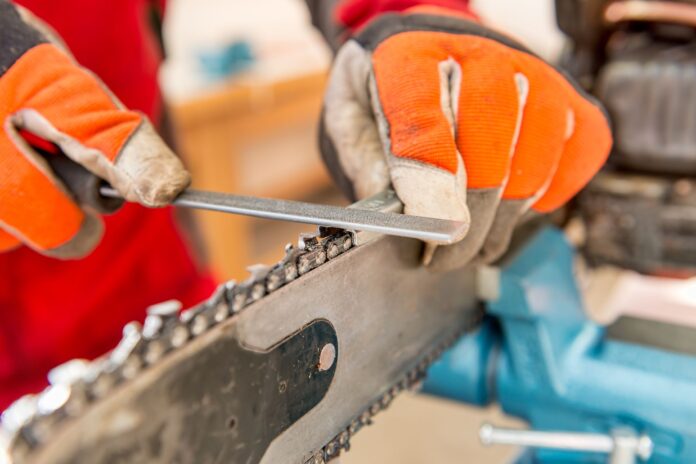
Chainsaws are a great invention that allows for cutting wood and felling trees much faster than mechanical tools. Yet, they are also vulnerable to common problems like getting dull. Given how easy a chain can be replaced, is it worth wasting time sharpening chains? And will even the best chainsaw sharpener help you make the chain as good as new? We asked toolsngoods.com to show us how it works.
The Idea of Sharpening
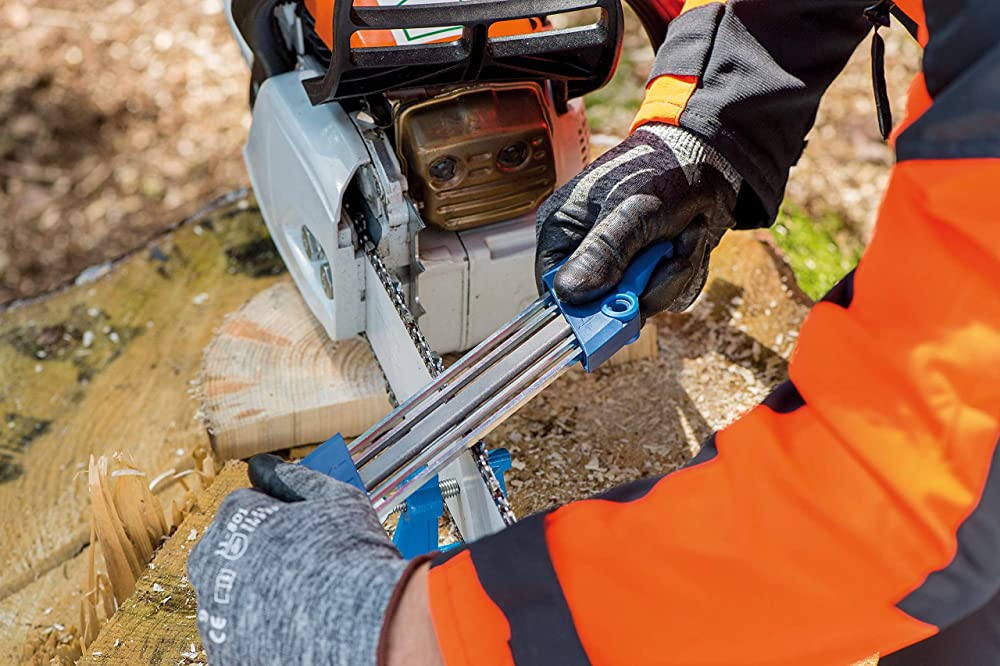
Any cutting tool gets dull with time. As its cutting edge becomes thicker, it requires more pressure to do its job. And while it’s not as noticeable with butter or vegetables, with materials like wood, the difference is drastic, especially if you have little time to get the job done.
When Do You Need to Sharpen the Chain?
How do you notice that your chainsaw needs sharpening? Not simply by looking at it, though this skill comes with experience. You will inevitably see one of the following effects after using a chain long enough.
It takes more force to cut the wood with the chainsaw. The reason is that when the chain teeth get dull, the area you apply the force to grows, and the pressure is distributed across the larger area. So you need more power to provide the same effect.
The saw leaves fine powder instead of regular-sized sawdust. The blades start grinding instead of cutting when they get dull, resulting in detached smaller pieces.
Smoke is coming from the chainsaw. It happens because a dull blade forces the motor to work the hardest, even if the tension is correct and the saw is well oiled. This is one of the biggest risks imposed by dull chains.
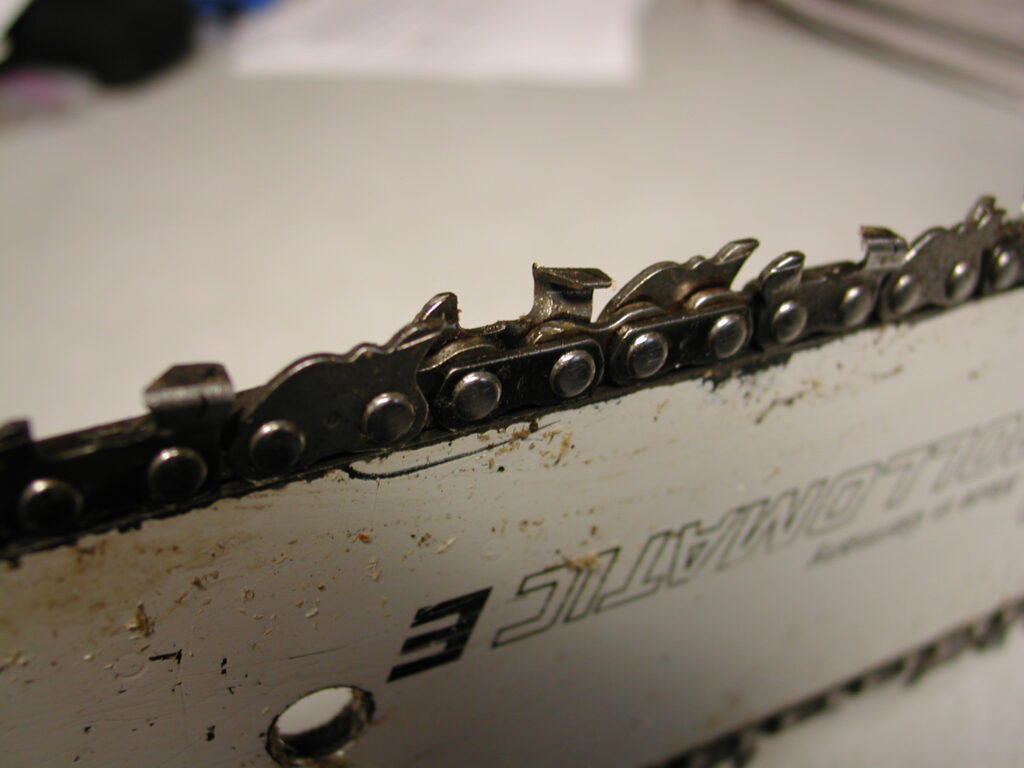
The chainsaw may just get stuck in the wood, simply unable to cut forward. In fact, any blade may get stuck under some conditions. But if it does get stuck where previously it didn’t, something should be done, and you know what exactly.
All of these symptoms indicate you need your chain sharpened to keep your efforts efficient and your chainsaw functional.
What Do You Need to Sharpen a Saw Chain?
When it comes to regular knives, a sharpener may be as simple as a piece of stone. It’s not the case with saws, given the more sophisticated structure of their toothed blades. So, you need a specialized sharpener.
There are 2 sorts of them:
Manual sharpener. It requires some physical effort and accuracy while applying. Yet it’s more affordable and can be used in the forest, with no socket around.
Electric sharpener. This way is easier to use and more versatile, able to sharpen various types of chains. But they are meant for workshops or require you to carry a generator or a battery providing sufficient voltage.
How Long Does It Take to Sharpen a Chain?
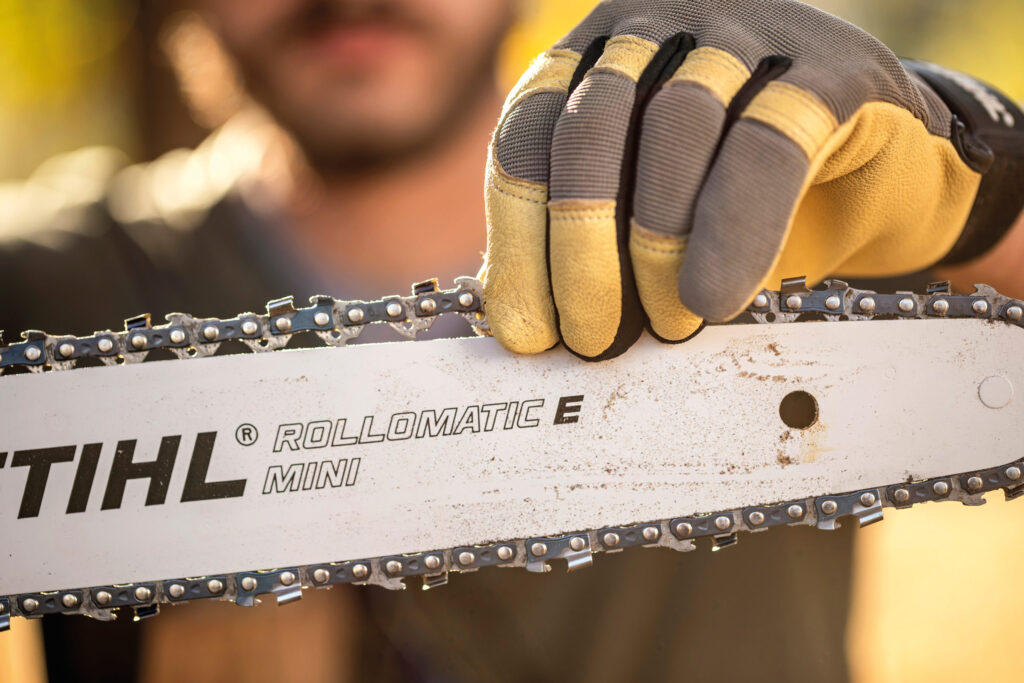
It usually takes 10-15 minutes to sharpen one chain with either an electric sharpener or a manual one. Operating it alone doesn’t even count as a break because you still do physical work while sharpening it. A change of activity may count, but not much.
For teamwork, though, it can provide some minutes of rest. The employees will waste much less time waiting for their chains to be sharpened. Moreover, that little time they spend waiting can be used for rest rather than another physical effort, resulting in better performance.
How Many Times Can a Chain Be Sharpened?
There is no universal answer to this question as it depends on how you use it. In hard cases, a chain may lose some of its teeth, and it can’t be fixed by sharpening; you have to rely on the remaining ones. Another variable is the degree of dullness the chain reaches when you notice it produces powder.
In general, if nothing terrible happens and you pay attention to the size of the sawdust, you can sharpen the chain up to 10 times and sometimes more. If some teeth are lost or damaged, it can reduce the number. You should also see how much metal is wasted while sharpening; it’s good to have a new identical chain to make the comparison. But the best way to check whether it’s worth sharpening the chain further is to see how it performs after the procedure. If it doesn’t help anymore, it’s time to get a new one.
Is a Chain Sharpener a Good Investment?
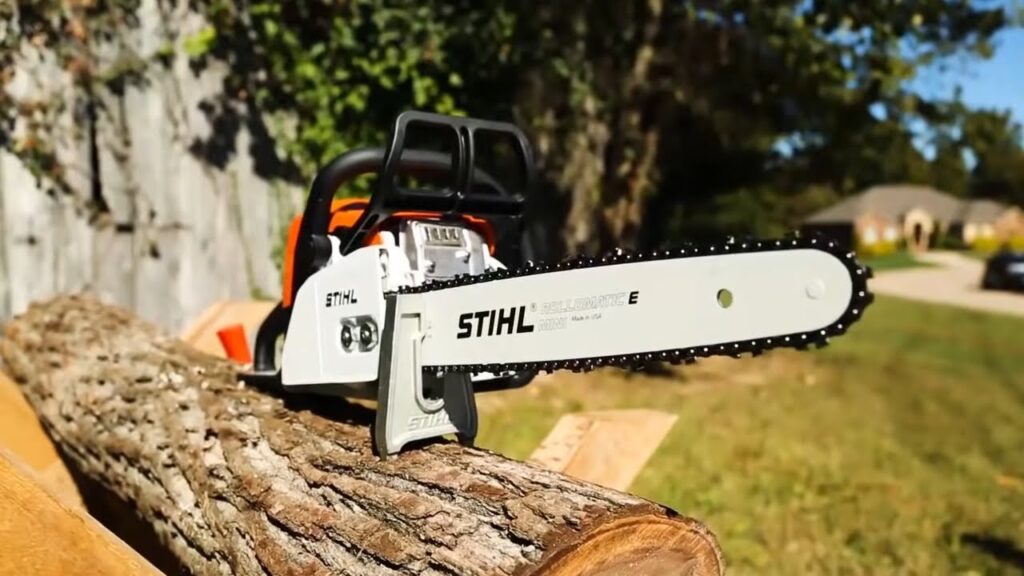
Let’s do some math. Unless we consider the most expensive carbide-tipped ones, a chain for a chainsaw is around $20 (for most types) and up to $60 (for ripping chains). Let’s assume we use a 72-drive full chisel chain by Stihl, under $40 (okay, $40). Replacing it 10 times will cost you $400.
You can buy a manual chain sharpener by Pferd for about $45, just a bit more expensive than one replacement chain. It’s easy to calculate that buying it makes sense even if you sharpen just one chain twice. Let alone situations when you expand the lifespan of your chain by sharpening it 10 times.
If you need to sharpen more frequently (for example, you manage a workshop and a brigade using about a dozen chainsaws), you may want to use a more efficient tool, like an electric chain sharpener by Oregon. This tool costs $225—250 (depending on the kit). And though it requires a socket to function and a dedicated operator if the need emerges often, it accelerates the job by being able to handle chains with less hassle. Again, if you use the aforementioned 72-drive chains by Stihl, the sharpener will pay off during the lifespan of just one chain.
So, Does Chain Sharpening Pay Off?
It definitely does. Not only will you save money on it. You will also obtain a new skill to improve your knowledge of woodworking. So, when you buy a chainsaw, a sharpener is among the first accessories you should consider buying. It will prolong the chain’s life, and if you have no replacement available, it will just save the day.








